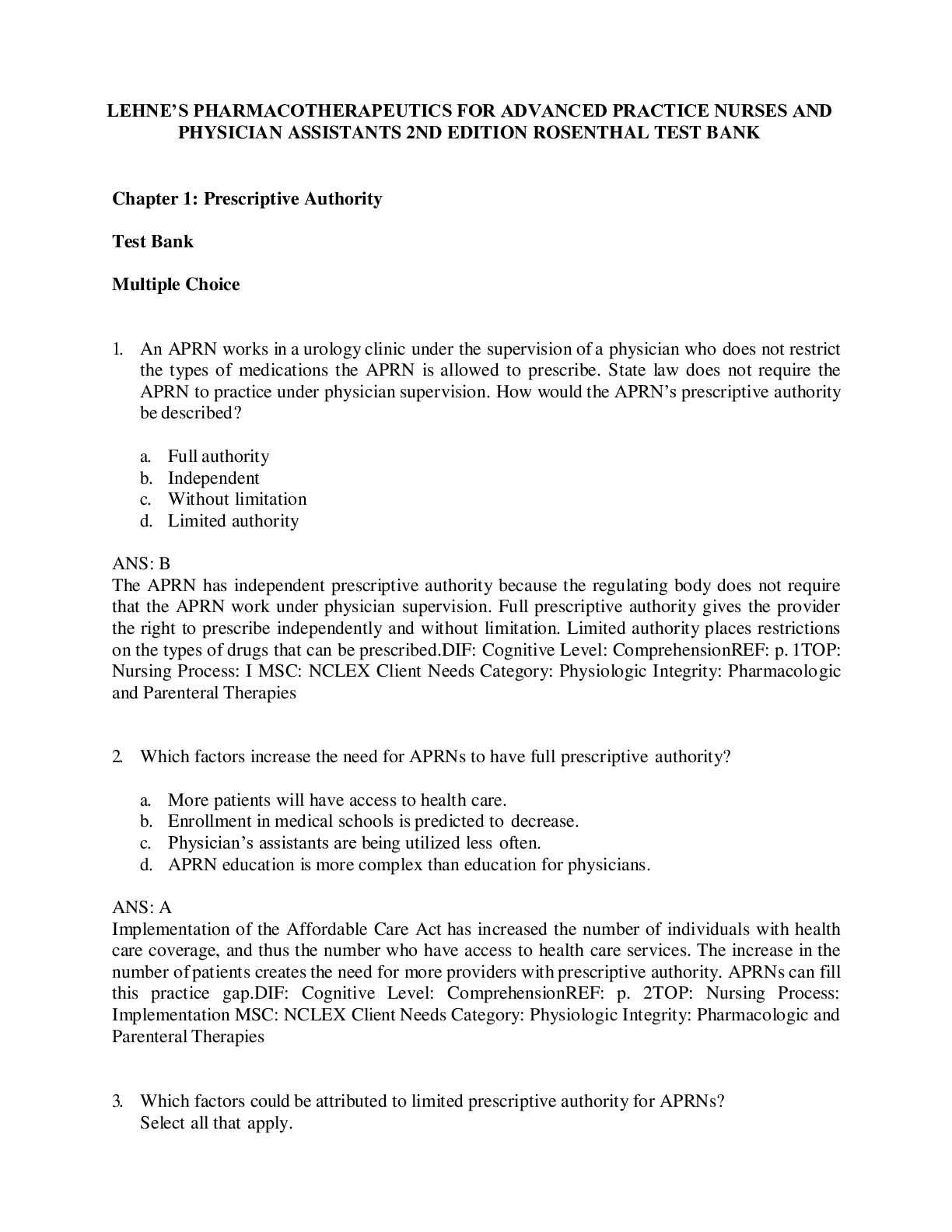*NURSING > TEST BANKS > Chapter 50: Care of Surgical Patients (All)
Chapter 50: Care of Surgical Patients
Document Content and Description Below
Chapter 50: Care of Surgical Patients MULTIPLE CHOICE 1. The nurse is precepting a student nurse and explains that perioperative nursing care occurs a. Before, during, and after surgery. b. In pre... admission testing. c. During the surgical procedure. d. In the postanesthesia care unit. ANS: A Perioperative nursing care occurs before, during, and after a surgery. Preadmission testing occurs before surgery and is considered preoperative. Nursing care provided during the surgical procedure is considered intraoperative, and in the postanesthesia care unit, it is considered postoperative. All of these are parts of the perioperative phase, but each individual phase does not explain the term completely. DIF: Remember REF: 1254 OBJ: Explain the concept of perioperative nursing care. TOP: Implementation MSC: Physiological Integrity: Reduction of Risk Potential 2. The nurse is caring for a patient who is scheduled to undergo a surgical procedure. The nurse is completing an assessment and reviews the patient’s laboratory tests and allergies. In which perioperative nursing phase would this work be completed? a. Perioperative b. Preoperative c. Intraoperative d. Postoperative ANS: B Reviewing the patient’s laboratory tests and allergies is done before surgery in the preoperative phase. Perioperative means before, during, and after surgery. Intraoperative means during the surgical procedure in the operating suite; postoperative means after the surgery and could occur in the postanesthesia care unit, in the ambulatory surgical area, or on the hospital unit. DIF: Understand REF: 1254 OBJ: Explain the concept of perioperative nursing care. TOP: Assessment MSC: Physiological Integrity: Reduction of Risk Potential 3. The nurse is caring for a patient in the postanesthesia care unit. The patient has developed profuse bleeding from the surgical site, and the surgeon has determined the need to return to the operative area. This procedure would be classified as a. Elective. b. Urgent. c. Emergency. d. Major. ANS: C An emergency procedure must be done immediately to save life or preserve function of a body part. An example would be repair of a perforated appendix, repair of a traumatic amputation, or control of internal hemorrhaging. An urgent procedure is necessary for a patient’s health and often prevents additional problems form developing. An example would be excision of a cancerous tumor, removal of a gallbladder for stones, or vascular repair for obstructed artery. An elective procedure is performed on the basis of the patient’s choice; it is not essential and is not always necessary for health. An example would be a bunionectomy, plastic surgery, or hernia reconstruction. A major procedure involves extensive reconstruction or alteration in body parts; it poses great risks to well-being. An example would be a coronary artery bypass or colon resection. DIF: Remember REF: 1256 OBJ: Differentiate between classifications of surgery and types of anesthesia. TOP: Assessment MSC: Physiological Integrity: Reduction of Risk Potential 4. The nurse is caring for a patient in preadmission testing. The patient has been assigned a physical status classification by the American Society of Anesthesiologist of P3. Which of the following assessments would support this classification? a. Denial of any major illnesses or conditions b. Normal, healthy patient c. History of hypertension, 80 pounds overweight, history of asthma d. History of myocardial infarction that limits activity ANS: C A P3 is a patient with a severe systemic disease. Patients with hypertension, obesity, diabetes mellitus, and asthma fit into this category. A P1 is a normal healthy patient. A P2 is a patient with mild systemic disease. A P4 is a patient with severe systemic disease that is a constant threat to life. DIF: Understand REF: 1256 OBJ: Differentiate between classifications of surgery and types of anesthesia. TOP: Assessment MSC: Physiological Integrity: Reduction of Risk Potential 5. The patient has presented to the ambulatory surgery center to have a colonoscopy. The patient is scheduled to receive moderate sedation (conscious sedation) during the procedure. Moderate sedation is used routinely for procedures that require a. Performance on an outpatient basis. b. A depressed level of consciousness. c. Loss of sensation in an area of the body. d. The patient to be immobile. ANS: B Moderate sedation (conscious sedation) is used routinely for procedures that do not require complete anesthesia, but rather a depressed level of consciousness. Not all patients who are treated on an outpatient basis receive moderate sedation. Regional anesthesia such as local anesthesia provides loss of sensation in an area of the body. General anesthesia is used for patients who need to be immobile and to not remember the surgical procedure. DIF: Remember REF: 1273-1274 OBJ: Differentiate between classifications of surgery and types of anesthesia. TOP: Assessment MSC: Physiological Integrity: Reduction of Risk Potential [Show More]
Last updated: 2 years ago
Preview 1 out of 19 pages

Buy this document to get the full access instantly
Instant Download Access after purchase
Buy NowInstant download
We Accept:

Reviews( 0 )
$9.00
Can't find what you want? Try our AI powered Search
Document information
Connected school, study & course
About the document
Uploaded On
Jan 17, 2022
Number of pages
19
Written in
Additional information
This document has been written for:
Uploaded
Jan 17, 2022
Downloads
0
Views
70

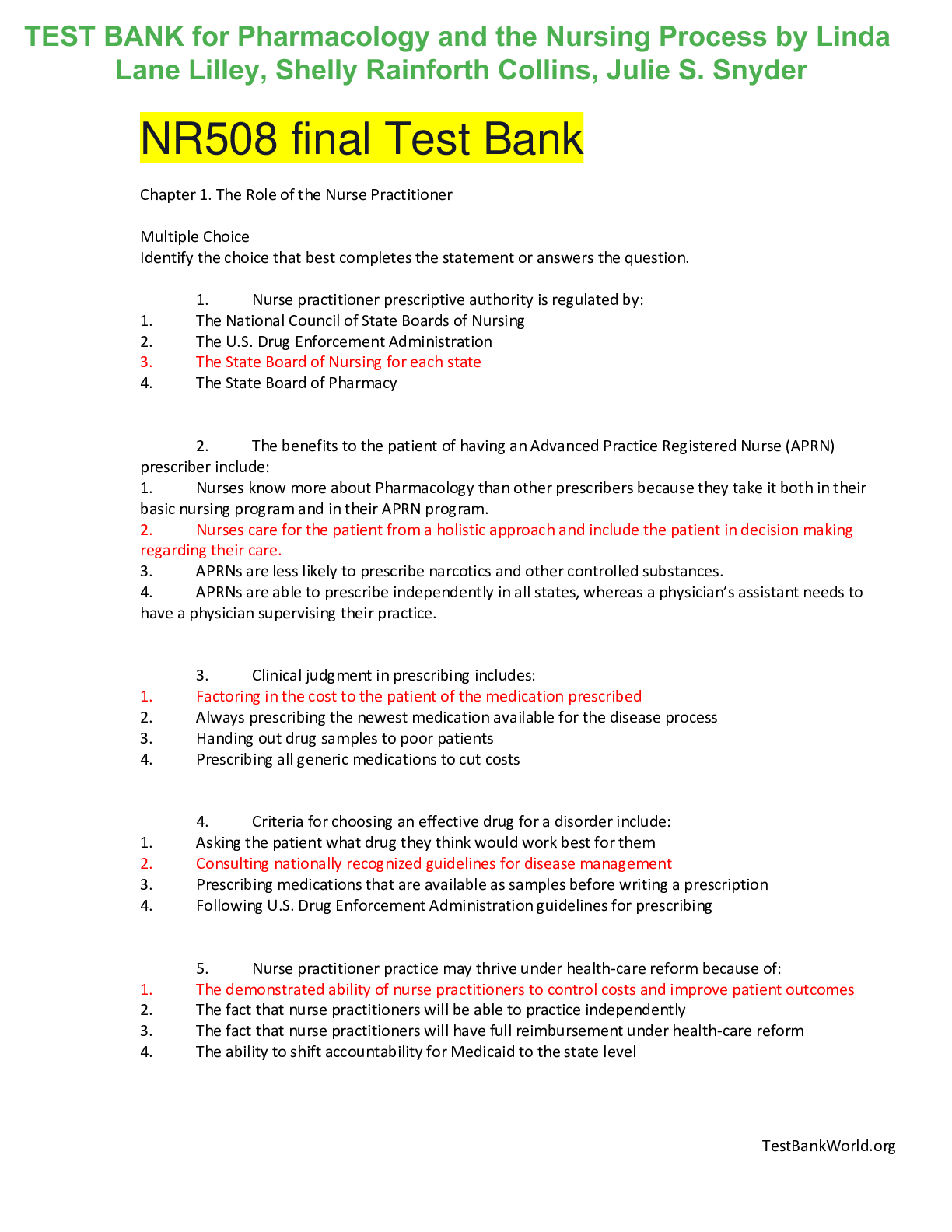
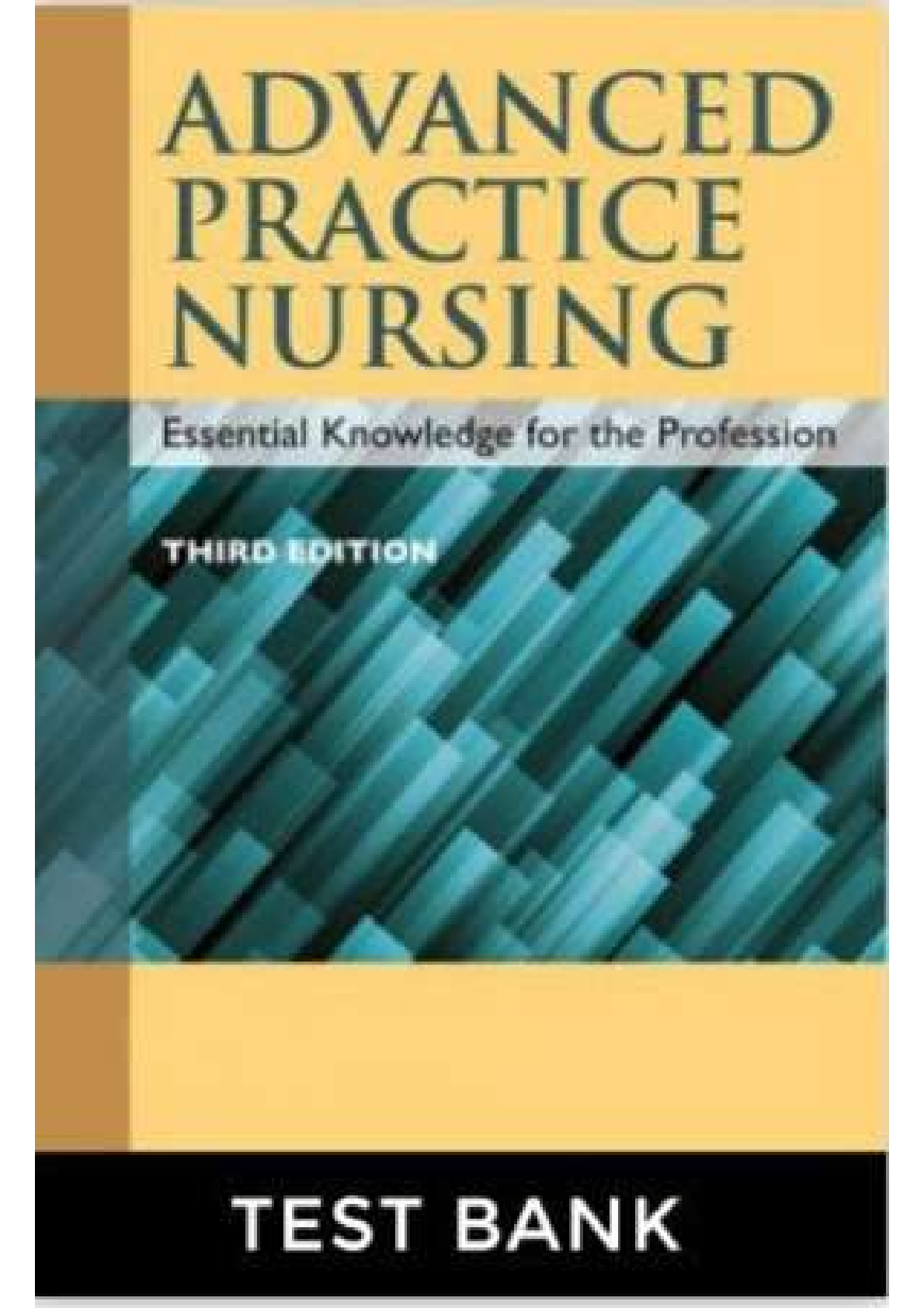
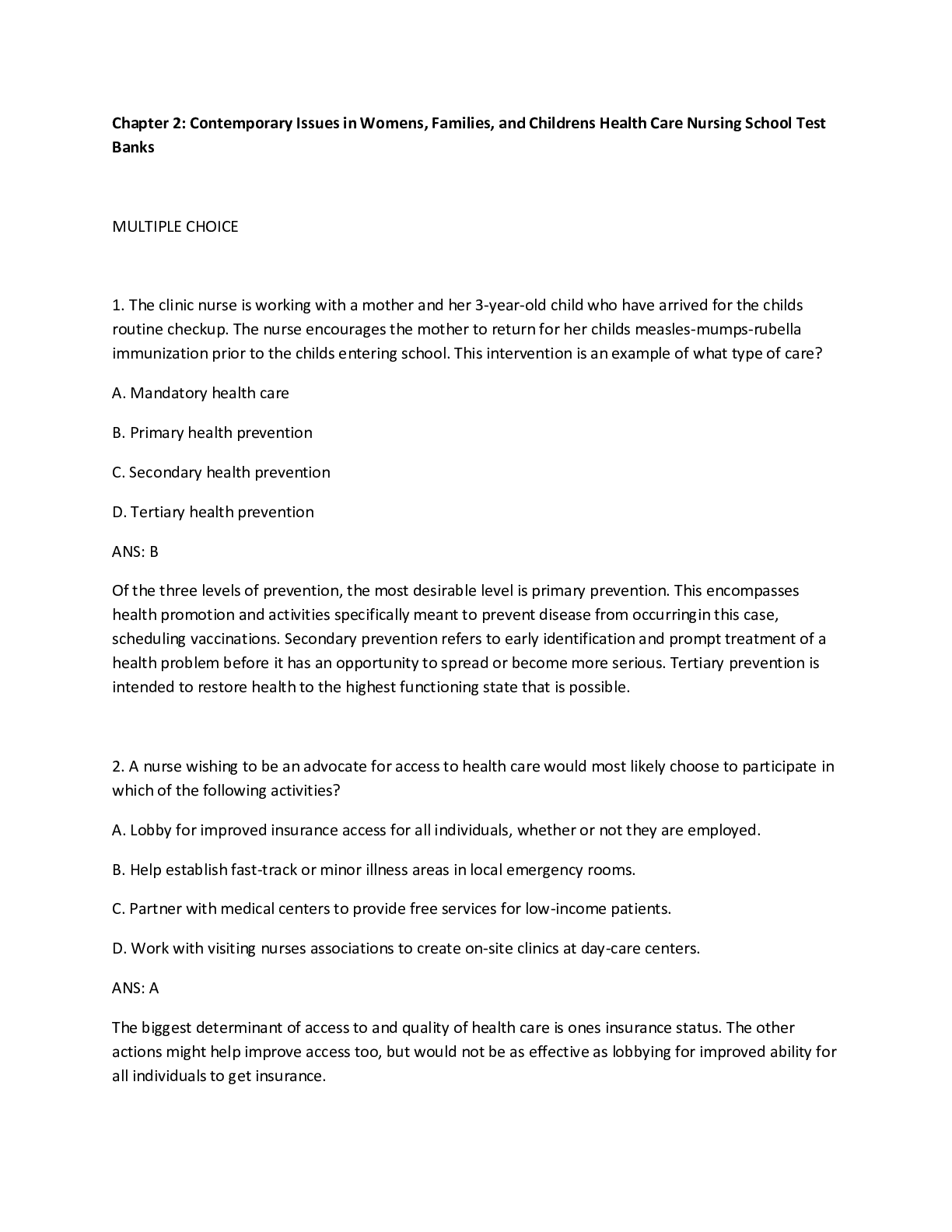


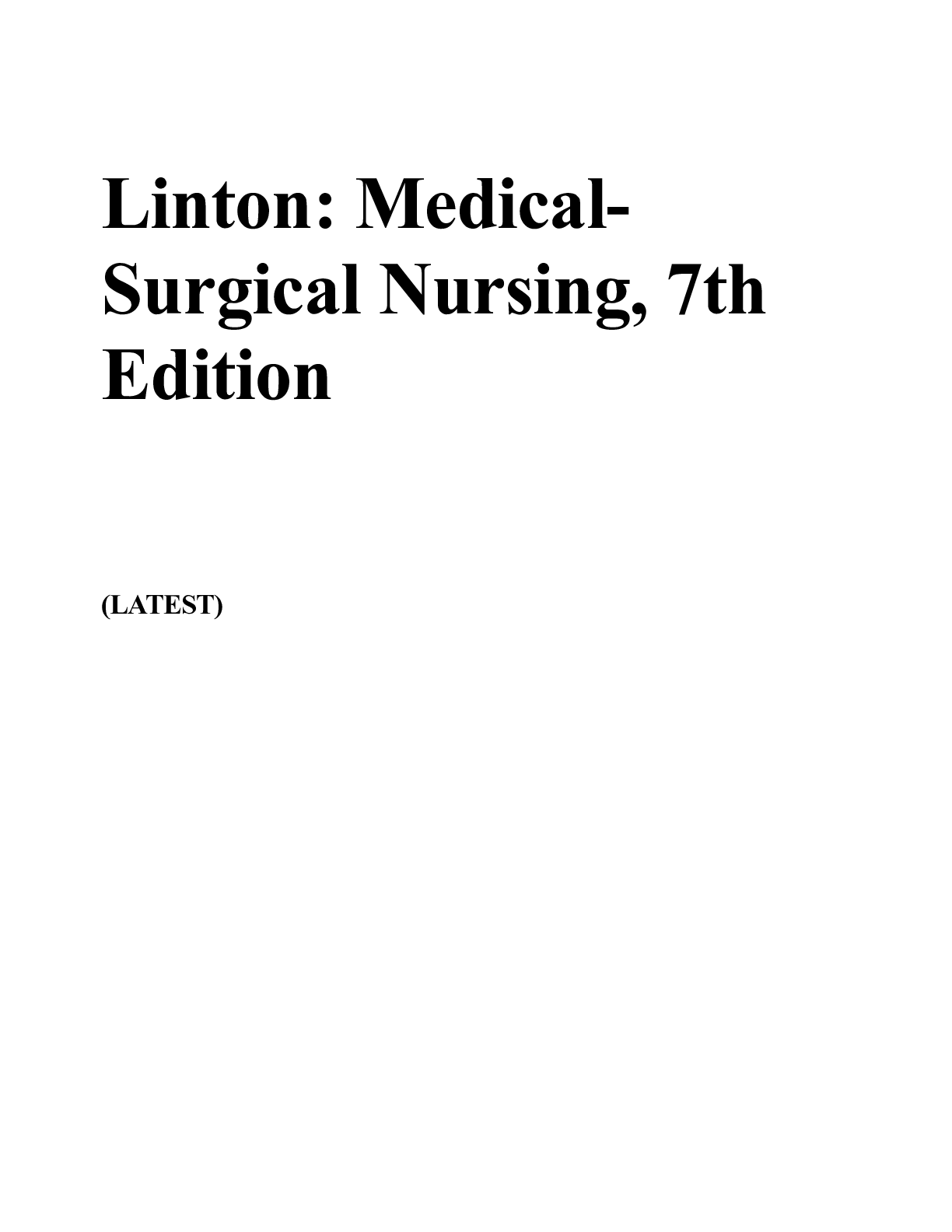
 Van Blarcom, Jeff - Wiley Series 65 Exam Review 2016 + Test Bank_ the Uniform Investment Advisor Law Examination-Wiley (2015).png)


